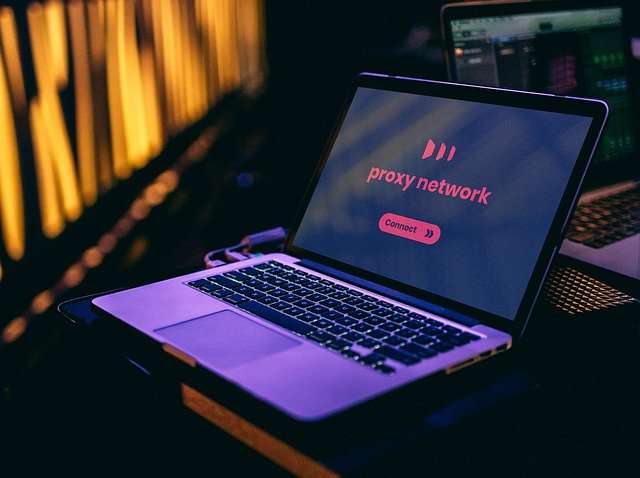What is Web Scraping?
Web scraping is the process of harvesting data from a website, either manually or using sophisticated tools. The process involves extracting the poorly structured data and converting it into a html parsing is the most commonly used technique in web scraping tools. The process is as follows: you input the url of the website from which you want to extract data. A rotating proxy server is the best for web scraping applications. It assigns your computer or web requests a new ip address. Use proxies from reliable proxy service providers. …
Have you ever copy-pasted any information from a website, maybe for your school assignment, work project, or to create a social media post?
Perhaps, at that time, you had another application, e.g., a word processing document or a spreadsheet, in which you pasted the text or numbers you had copied from a website.
What you may not have known at that time is that the process you were engaging in is known as web scraping.
This article explains what web scraping is and why it is crucial to use proxies from reliable proxy service providers to ensure the best web scraping experience.
What is Web Scraping?
Web scraping is the process of harvesting data from a website, either manually – as in the example above – or using sophisticated tools.
A website mainly contains poorly structured data, although in some cases, you may come across some tables that summarize the information on the site.
Using web scraping enables you to extract the poorly structured data and convert it into a more structured format. Further, you can store this extracted data in a spreadsheet or .csv file.
Thanks to the advancement in technology, nowadays, you can pay for tools that perform all these tasks, from extracting the data to converting it and saving it in a spreadsheet.
All you’re required to do is download the resultant file, and voila, you have all your information without much hassle. Simply put, using web scraping tools offers unmatched and gratifying convenience.
Uses of Web Scraping
Web scraping is used for the following applications:
- Price monitoring: to help companies formulate a pricing strategy that keeps them ahead of the competition.
- News and social media monitoring: helps businesses protect their brand because it keeps them abreast of what other people are saying about them.
- Lead generation. You can obtain publicly available people’s or businesses’ websites, email addresses, and phone numbers.
- Research: for scientific, academic, or marketing purposes.
- Gathering data for testing machine learning algorithms.
Web Scraping Techniques
Web scraping for these applications is either carried out manually or automatically. Manual extraction entails using the copy and paste function. However, when it comes to harvesting large volumes of data, using the manual technique consumes a lot of time, and the amount of information you’ll collect is nothing when compared to the automatic methods of data extraction. Hence, the latter is ideal.
The automatic techniques include:
- Document Object Model (DOM) parsing
- Hypertext Markup Language (HTML) parsing
- XPath
- Vertical aggregation
- Text pattern matching
- ImportXML function on Google Sheets
HTML parsing is the most commonly used technique in web scraping tools.
Categories of Web Scraping Tools
Web scraping tools can be grouped into three categories:
- Browser extensions
- Cloud-based tools
- Software that you can install on your personal computer or server.
Web Scraping Process
The web scraping process described in this article only highlights what happens when you use web scraping tools, the easiest and most convenient method of extracting data from websites. The web scraping process is as follows:
- You, as the user, input the URL of the website from which you wish to extract data.
- The web scraping tool then loads the URL and renders the web page, thereby migrating the web page’s data to its window. Rendering the web page is a two-step process:
- Analysis of the language used to create the website in a process called parsing. In most cases, HTML is used.
- Extraction of all the data in the webpage, in a structured format. The structure emanates from the fact that the HTML code contains labels that identify each dataset.
- Upon rendering, you can now choose the exact information you wanted to harvest in the fast place.
- Once you select the exact information, the web scraping tool converts the specified data into a structured format and saves it in a downloadable file such as a spreadsheet or .csv file.
- The last process is just downloading the file.
Use of Proxies in Web Scraping
Successful web scraping depends on finding a useful web scraping tool. However, this is just the beginning since with a web scraping tool alone, you can’t do much. To prevent large-scale data extractions, web developers include anti-scraping tools. These tools include:
- IP blocking and blacklisting
- CAPTCHAs
- AJAX
- User-agents (UA)
- Log-in requirements
Fortunately, you can circumvent each of the restrictions that arise from integrating the anti-scraping tools in websites. But this section focuses on addressing the first problem.
IP Blocking and Blacklisting
Websites block IP addresses from which too many web requests originate. Coincidentally, web data extraction involves making many web requests, implying that websites can easily block web scraping tools.
In this regard, to prevent IP blocking and blacklisting, you need to use a proxy server whenever you’re extracting data using a web scraping tool.
A proxy server masks your real IP address and assigns your computer or web requests a new IP address.
A rotating proxy server is the best for web scraping applications because it changes your computer’s IP address regularly.
Don’t forget that using proxies from reliable proxy service providers is essential because shared or free proxies might be insecure.

Hello! My name is Lucas, and I am the creator of ursuperb.com. I’ve been writing about technology for almost 10 years now, and I love talking about tech news, reviews, and tutorials. I’m currently living in San Francisco, CA, and I’ve been blogging professionally since 2012. I love what I do, and I really enjoy interacting with people online. I believe in creating positive change for humanity, and I try to inspire others to do the same. You can read more about me here.
My favorite thing about Ursuperb is that I’m able to provide useful information to anyone interested in learning more about technology. No matter what kind of tech you use (computer, smartphone, tablet), you will definitely find something interesting to read on Ursuperb. So, let’s take a look at some of the topics I cover on Ursuperb:
1) How To Build An Online Business With WordPress
2) How To Make Money On YouTube Using AdSense
3) What Is Google Analytics? And Why Should You Use It?
4) How To Make Your Own Website Design Software For Free



